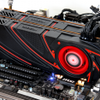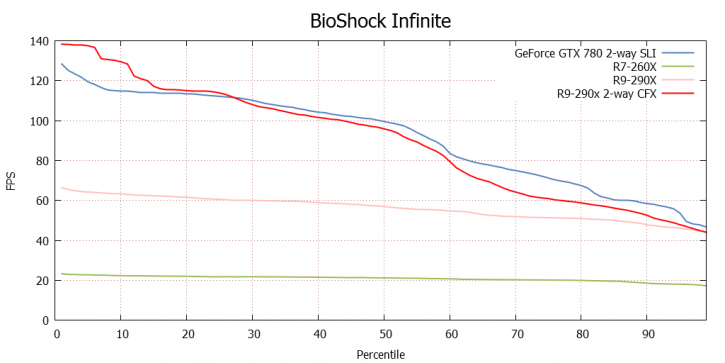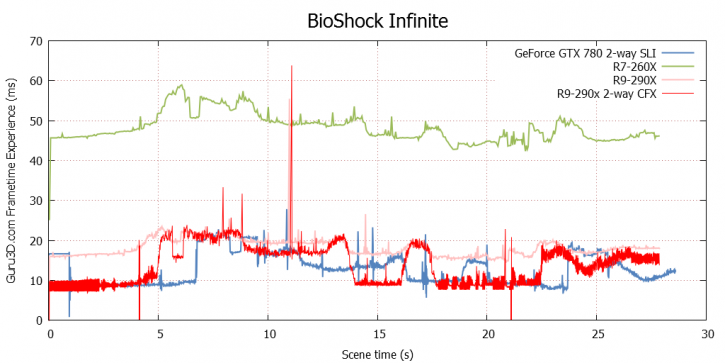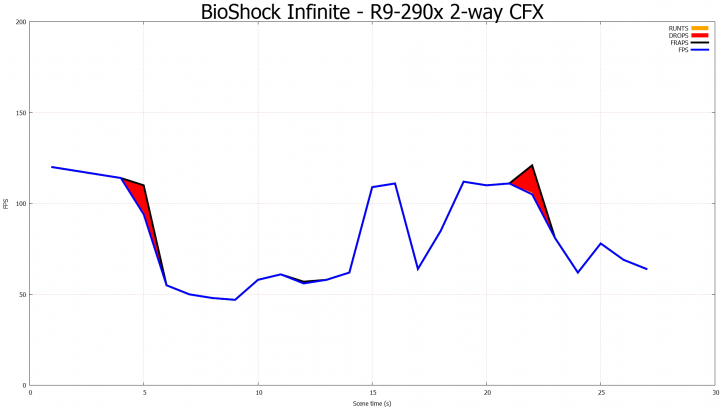FCAT Frame Experience Analysis BioShock Infinite
BioShock Infinite Frame Experience Analysis
Above a percentile chart of the 30 seconds @ 2560x1440. Here we plot FPS and place it in relation to percentiles. This methodology could be used to determine average FPS as well.
Check the 50% marker:
- GTX 780 SLI does roughly100 FPS on average in this scene sequence
- R9-290X CFX does roughly 98 FPS on average in this scene sequence
But now lets look at frame latency.
On this 30 Second run the graphics cards all manage a good result. Despite one or two very small spikes we cannot detect a glitch or stutter that is significant or long-lasting. For those that do not understand what you are looking at, the above is a gametime scene recorded for 30 seconds.
With this chart, lower = better. Huge spikes above 40ms to 50ms can be considered a problem like a stutter or indicate a low framerate. We see two spikes; one at 12 seconds into the scene time and one at 21 and 22 seonds followed by a dropped frame. Quite honestly it still is nothing to worry about as the overall plot is very smooth.
In the FPS chart we plot FPS against the scene time. I mentioned really minor spikes spike and one framedrop, these are registered here in this plot as well. Two such small incidents over almost 30 seconds honestly, is nothing much at all. The plotted charts make it looks worse then it in reality visually is.




